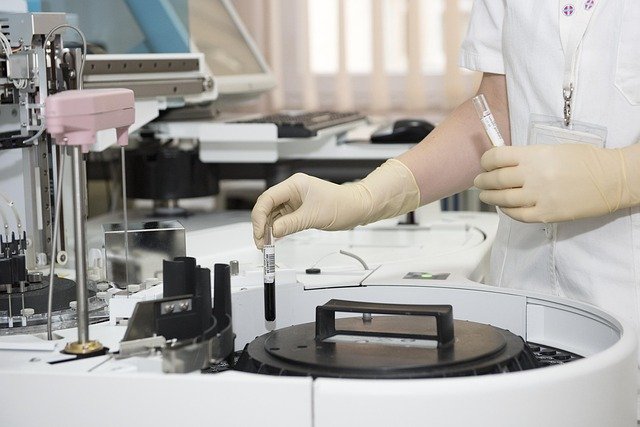Modern Medical Lab Equipment: Advancing Healthcare Diagnostics
Today's medical laboratories are experiencing a revolutionary transformation through cutting-edge equipment that dramatically enhances patient care. These technological advances are reshaping how healthcare providers diagnose conditions, process test results, and deliver critical medical insights. From artificial intelligence-powered analyzers to miniaturized diagnostic devices, modern medical lab equipment is setting new standards for accuracy, speed, and reliability in clinical settings worldwide.

How Do Innovations in Medical Lab Equipment Improve Diagnostic Accuracy?
Recent breakthroughs in laboratory technology have significantly enhanced diagnostic precision through sophisticated automation and advanced analytical capabilities. Modern hematology analyzers now utilize flow cytometry and fluorescent technologies to identify cellular abnormalities with unprecedented accuracy rates exceeding 99.5%.
Molecular diagnostic platforms incorporate real-time PCR technology and next-generation sequencing, enabling healthcare providers to detect genetic markers and pathogens at extremely low concentrations. These innovations reduce human error while providing consistent, reproducible results across different testing environments.
Mass spectrometry systems have revolutionized clinical chemistry by offering precise identification of proteins, metabolites, and drug compounds. This technology allows laboratories to perform multiple analyses simultaneously while maintaining exceptional specificity and sensitivity levels.
How Do Advanced Lab Devices Support Faster Test Results?
Modern laboratory automation has transformed turnaround times through integrated sample processing systems and streamlined workflows. Automated track systems can process hundreds of samples simultaneously, reducing manual handling time from hours to minutes for routine tests.
Point-of-care testing devices enable immediate results for critical parameters like cardiac markers, infectious disease screening, and blood glucose monitoring. These portable units deliver laboratory-quality results within 15-30 minutes, compared to traditional methods requiring several hours or days.
High-throughput analyzers equipped with artificial intelligence algorithms can prioritize urgent samples, automatically dilute specimens, and flag abnormal results for immediate attention. This intelligent processing ensures critical patient information reaches healthcare providers as quickly as possible.
What Are Cost-Effective Solutions for Upgrading Medical Laboratory Tools?
Healthcare facilities can implement strategic upgrade approaches that maximize return on investment while maintaining quality standards. Modular equipment systems allow laboratories to expand capabilities incrementally rather than requiring complete system replacements.
Leasing agreements and flexible financing options enable facilities to access advanced technology without substantial upfront capital investments. Many manufacturers offer trade-in programs that provide credit toward new equipment purchases when upgrading existing systems.
Shared laboratory services and equipment consortiums allow smaller facilities to access high-end diagnostic capabilities through collaborative arrangements. This approach distributes costs across multiple healthcare providers while ensuring access to specialized testing equipment.
How Do You Choose the Right Lab Equipment for Reliable Clinical Outcomes?
Selecting appropriate laboratory equipment requires careful evaluation of testing volume, accuracy requirements, and workflow integration capabilities. Healthcare facilities should assess their specific diagnostic needs, patient demographics, and regulatory compliance requirements before making equipment decisions.
Instrument validation protocols ensure new equipment meets clinical performance standards through rigorous testing and comparison with established reference methods. This process confirms that results align with existing quality control measures and maintain diagnostic reliability.
Vendor support services, including maintenance programs, technical training, and software updates, play crucial roles in long-term equipment performance. Comprehensive service agreements help ensure consistent operation and minimize unexpected downtime costs.
| Equipment Type | Provider | Cost Estimation |
|---|---|---|
| Automated Hematology Analyzer | Sysmex Corporation | $80,000 - $200,000 |
| Chemistry Analyzer System | Roche Diagnostics | $120,000 - $350,000 |
| PCR Diagnostic Platform | Thermo Fisher Scientific | $60,000 - $150,000 |
| Point-of-Care Testing Device | Abbott Laboratories | $15,000 - $45,000 |
| Mass Spectrometry System | Agilent Technologies | $200,000 - $500,000 |
Prices, rates, or cost estimates mentioned in this article are based on the latest available information but may change over time. Independent research is advised before making financial decisions.
What Trends in Medical Technology Impact Laboratory Testing for Seniors?
Aging populations require specialized diagnostic approaches that address age-related physiological changes and multiple chronic conditions. Modern laboratory equipment incorporates algorithms that adjust reference ranges based on patient age, ensuring accurate interpretation of results for senior populations.
Telehealth integration allows remote monitoring of chronic conditions through portable diagnostic devices that transmit results directly to healthcare providers. This technology particularly benefits seniors with mobility limitations or those residing in rural areas with limited access to laboratory facilities.
Artificial intelligence applications in laboratory medicine help identify drug interactions, metabolic changes, and disease progression patterns specific to geriatric patients. These systems provide healthcare providers with comprehensive insights that support personalized treatment planning for elderly patients.
Laboratory medicine continues evolving through technological advancement, offering healthcare providers increasingly sophisticated tools for patient diagnosis and monitoring. Modern equipment combines enhanced accuracy, improved efficiency, and cost-effective operation to support optimal clinical outcomes. As healthcare demands grow and patient populations age, these innovations ensure that medical laboratories can meet rising expectations for quality, speed, and reliability in diagnostic services.
This article is for informational purposes only and should not be considered medical advice. Please consult a qualified healthcare professional for personalized guidance and treatment.




